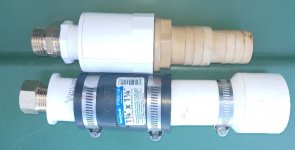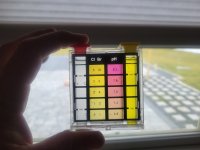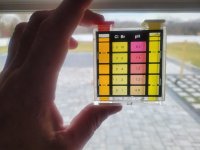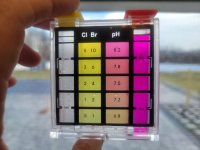You'll find it won't.
I tested it with about two and a half feet of half inch PVC pipe, and you're right. I worked out a technique of putting it in the water with my thumb tightly over the top and then when I let go it shot up a bit up out of the top of the tube and then I capped it with my thumb and angled it out of the water - but that's way too much work.
I like your idea better so now I know why the holes on both end!
At first almost all the water fell out the bottom until I learned to angle it out, like you might scoop water with a spoon, sort of.You might be able to work the top well enough, blocking it with your thumb, but it won't be convenient, especially when bending over to get it down into the water. The bigger problems are: the water will tend to fall out of the bottom as you bring it out of the water,
It worked but you had to get even lower on the deck - but the whole point was to save my knees - so it's not worth it to "scoop" the deep water out that way.
I like your idea better.
Good point! I only splashed the water on the deck as I had decided early on it wasn't working as well as I had hoped it would.and if your sample container has a narrow neck then you'll lose another chunk of water aiming the bottom of the pipe at the container (picture: the container in your left hand, your right hand 30" away, at the top of the pipe holding your thumb over the top, while trying to aim the 30" of pipe at the little opening in the container).
I agree. I used 1/2 inch PVC of about two and a half feet long - which didn't hold all that much water.Yes, a smaller pipe would work, but 30" of 3/4" PVC is about the amount of water needed for a full suite of tests.
Agreed on both counts. Better to go into a sample bottle directly, taking into account your hand is still on one end of a long pipe.It fills a Leslie's water sample container perfectly (which is sized for the correct amount of water). With a smaller pipe, you'll need to dip at least twice.
I think your idea is grand. I'm working on my own stuff for turning a sump pump into a pool vacuum, but it's in the nascent stage as you can see by my prototype connections in the image below for going from the vacuum hose to a garden hose.I've already worked all this out. The pic I posted is actually the prototype. I redesigned/replaced it with the "current model," based on trial and error. But be my guest if you want to do it again!Maybe you'll think of something I didn't.

I like the parts list! Perfect.Otherwise:
- 30" @ 3/4" PVC
- top 3/4" cap with 1/2" hole drilled through it
- bottom 3/4" cap with 5/16" hole drilled through it
You can flip the pipe over to get two different flow rates, if you find one is too slow or too fast.
You don't need to glue the caps.






